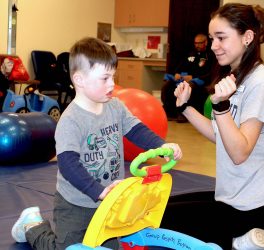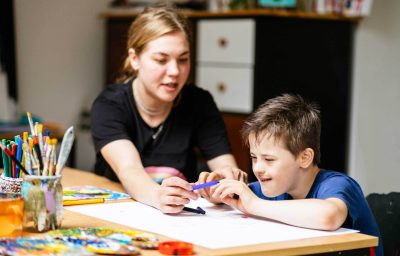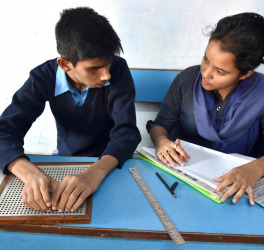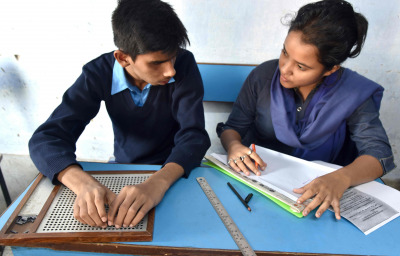
Students with disabilities frequently face heightened rates of bullying and social exclusion in educational settings. To equip teachers with the skills to identify, counteract, and prevent such bullying, the University of Missouri’s research team has pioneered an online professional development program rooted in evidence-based practices.
The curriculum highlights the value of teachers building a strong rapport with their students, noticing changes in student behavior as potential warning signs, incorporating social skills and communication skills into classroom learning objectives, as well as practicing behavior-specific praise in a way that showcases students’ strengths and encourages collaboration with peers.
While the online curriculum has recently been successfully received and implemented by 200 elementary school teachers in a pilot study in the southeastern region of the United States, the researchers hope that, with additional federal funding, the online curriculum can be soon accessed by teachers nationwide.
“Teachers often tell us they don’t feel prepared to address bullying issues at school, especially those complicated cases involving at-risk youth or kids with disabilities,” said Chad Rose, an associate professor in the MU College of Education and Human Development. “Students with disabilities often get bullied more than their peers without a disability. For example, kids with a stutter or kids that may walk or talk differently than their neurotypical peers often get mimicked, which could actually be a violation of federal civil rights laws related to disability-based harassment.”
Given the busy schedules of teachers, Rose and colleagues created an evidence-based online curriculum that can be completed in four hours, compared to most bullying-related professional development courses that take place in-person for a full day and don’t always include evidence-based information. The trainings are broken up into different modules, covering how to recognize and respond to bullying, as well as overall strategies to improve classroom climates in a way that reduce or prevent bullying in the first place.
“In the diverse public school district where we piloted this program, the teachers found it enjoyable and relevant. It increased their knowledge in bullying prevention, and it increased their willingness to intervene when they see bullying happening,” Rose said. “One of the easiest, fastest, simplest and most effective things teachers can do is implement social and communication skills as a learning objective into their already-made lesson plans. Instead of just teaching students math or science, tell them you will be monitoring how well they interact with one another.”
Rose encourages teachers to walk around their classroom and praise students who are having positive interactions with others.
“The two biggest predictors of bullying I have seen throughout my career are deficits in social and communication skills,” Rose said. “If we can improve those two areas, not only will the bullying decrease, but the confidence students have in themselves will increase. That sets them up for success regardless of what they go on to do in their lives.”
Rose explained that students with disabilities are often socially excluded by their peers for being “different” at a much higher rate than other students. In a 2022 study, Rose found that social exclusion is a far more common form of bullying than physical or verbal aggression.
“Imagine trying to learn algebra if you are more focused on if the kid sitting next to you even likes you in the first place,” Rose said. “We don’t all have to be best friends, but we need to be friendly to everyone.”
Rose added that for students who are bullied most often, he encourages them, depending on the situation, to know when to be assertive and to stand up for one’s values system, know when to walk away from a situation, as well as know who to tell if the environment seems unsafe.
“From the students’ perspective, self-advocacy, self-determination, goal setting and knowing how to be assertive without being aggressive is key,” Rose said. “From the teachers’ perspective, we want them to highlight students’ strengths in front of the entire class so that others start to perceive them differently. Some students tend to focus on what makes someone different, but if teachers can give behavior-specific praise when they see good things happening, it can improve the way students look at themselves.”
Rose is the director of the Mizzou Ed Bully Prevention Lab and has been researching bullying prevention for 18 years. He became interested in the topic during his first job out of college as a high school special education teacher working with at-risk youth.
“I want to help the kids who go to bed thinking about what they don’t like about themselves,” Rose said. “If I can help them feel better about themselves by emphasizing what makes them great, that is my ultimate goal.”
Future plans include incorporating bullying “office hours” into the online curriculum so that teachers can reach out to Rose, his collaborators, and their team of bully prevention coaches about specific case studies they may be dealing with in real time.
“Development of online professional development for teachers: Understanding, recognizing, and responding to bullying for students with disabilities” was recently published in Education and Urban Society. Funding was provided by the U.S. Department of Education’s Institute of Education Sciences.






